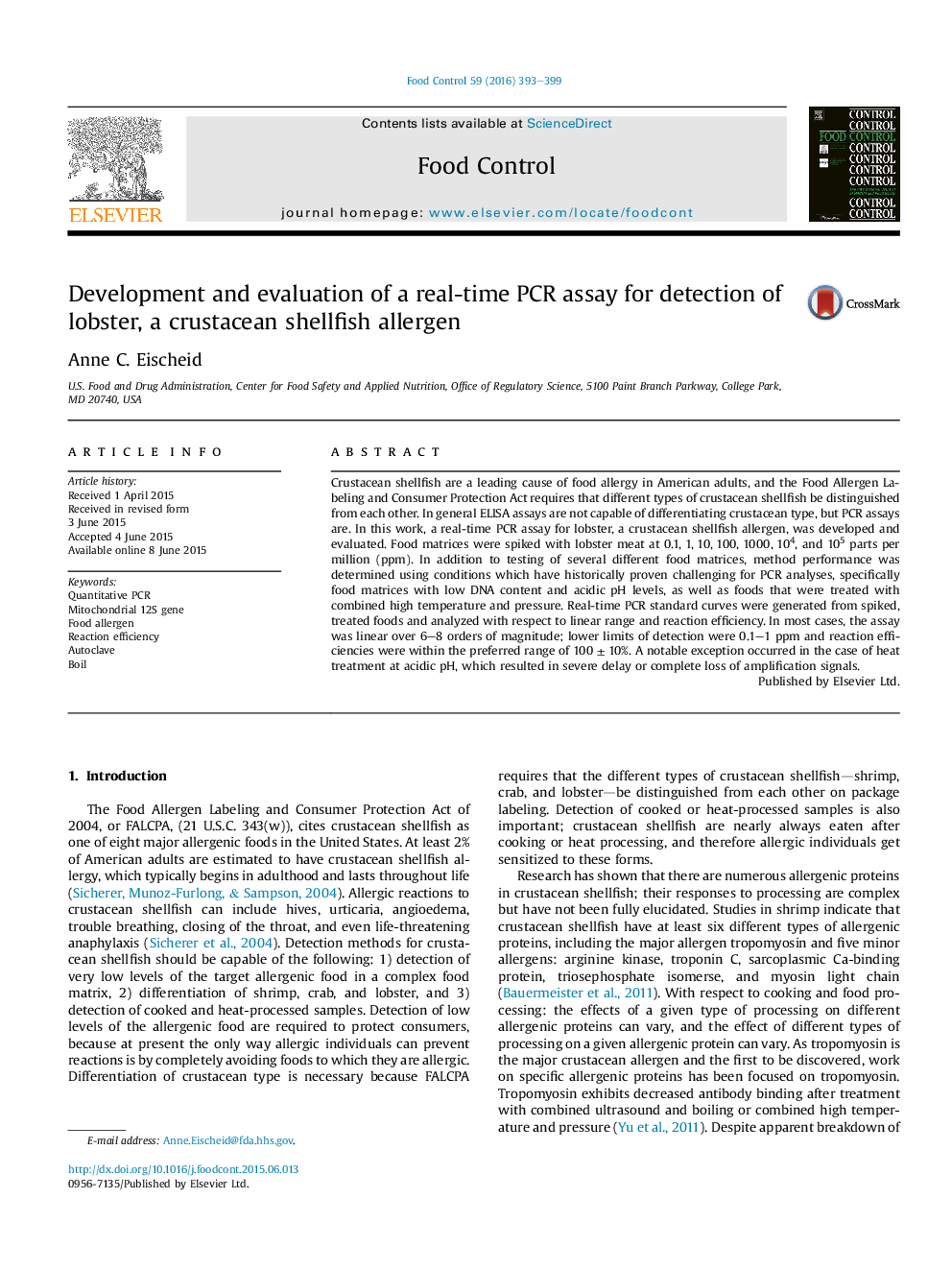| Article ID | Journal | Published Year | Pages | File Type |
|---|---|---|---|---|
| 6390589 | Food Control | 2016 | 7 Pages |
â¢A real-time PCR assay was developed for lobster, a crustacean shellfish allergen.â¢The assay was tested in several foods and conditions, including acidic and autoclaved.â¢The assay was linear from 0.1 ppm to 106 ppm in almost all conditions.â¢Assay results were reproducible in various food matrices and processing conditions.â¢The assay was adversely affected by heat treatment in an acidic food matrix.
Crustacean shellfish are a leading cause of food allergy in American adults, and the Food Allergen Labeling and Consumer Protection Act requires that different types of crustacean shellfish be distinguished from each other. In general ELISA assays are not capable of differentiating crustacean type, but PCR assays are. In this work, a real-time PCR assay for lobster, a crustacean shellfish allergen, was developed and evaluated. Food matrices were spiked with lobster meat at 0.1, 1, 10, 100, 1000, 104, and 105 parts per million (ppm). In addition to testing of several different food matrices, method performance was determined using conditions which have historically proven challenging for PCR analyses, specifically food matrices with low DNA content and acidic pH levels, as well as foods that were treated with combined high temperature and pressure. Real-time PCR standard curves were generated from spiked, treated foods and analyzed with respect to linear range and reaction efficiency. In most cases, the assay was linear over 6-8 orders of magnitude; lower limits of detection were 0.1-1 ppm and reaction efficiencies were within the preferred range of 100 ± 10%. A notable exception occurred in the case of heat treatment at acidic pH, which resulted in severe delay or complete loss of amplification signals.
